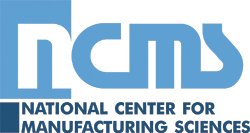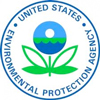Historical Articles
June, 1952 issue of Plating
This article discusses an aspect of plating-waste disposal which is not well understood, namely, the problems encountered when the wastes are discharged to municipal sewers. For some time the author has promoted interest in the effects of plating-waste constituents on sewage treatment processes. Now the Public Health Department of the State of Ohio is to begin an investigation into these matters. This article, therefore, is particularly timely.
Platers in many parts of the country are still indifferent to plating-waste disposal, and some have even criticized this journal for devoting so much space to it. They fail to realize that plating-waste treatment is here to stay and that they are living on borrowed time while many firms in other parts of the country spend much money on the development of better methods and improved engineering to the benefit of all.
The Plating Wastes Problem from the Electroplater’s Viewpoint*
A.K. Graham and H.L. Pinkerton
Graham, Crowley & Associates, Inc., Jenkintown, PA*From a paper presented at 24th Annual Meeting, Federation of Sewage and Industrial Wastes Associations, St. Paul, Minn., October 11, 1951. Reprinted with permission Sewage and Industrial Wastes February 1952.
**B. O. D. = biological oxygen demand.Increasing emphasis on stream pollution abatement and treatment of electroplating wastes in recent years has focused attention on the very complex nature of the problem. The object of this paper is to discuss several aspects of the problem from the electroplater’s viewpoint. An attempt is made to define the electroplating industry and the nature of the plating waste. A distinction is made between plants discharging waste into public waters and into municipal- sewers, and the problems related thereto are briefly discussed. Finally, the interdependence of the sanitary engineer (or architect) and the electroplating engineer for successful handling of plating waste problems is emphasized. An additional object of this paper is to effect a better understanding of the plating-waste problem mutually among the several groups concerned—the plating industry, the sewage-treatment group, and those responsible for maintaining the purity of public waters.
THE PLATING INDUSTRY AND PLATING WASTE
The electroplating industry nay be considered to cover broadly all kinds of metal finishing and include electroplating, electroforming, chemical coloring, surface treatment with phosphates or chromates, anodizing, painting, and lacquering. The base metals involved may be copper ferrous alloys, including stainless steels and alloys of copper, zinc, aluminum, magnesium, and lead. Nonmetallic base materials (such as plaster of Paris and plastics) may also be electroplated. Acids and alkalies, both concentrated and diluted, are used in the preparation of the base surfaces for the various finishes. The plating baths may be acid or alkaline and are almost without exception water solutions of salts of the metals to be deposited. Therefore, the waste from a plating establishment may include any combination of the metals and anions shown in Table I.It is probably safe to say that the waste from any one plant would never contain all of the, constituents listed in Table I, and ordinarily ingredients contributing to B. O. D.** are low. However, plating wastes may vary greatly compared to most plant wastes, since any combination of these constituents may be present and in widely different amounts. Because of this, an analysis of the proper handling and treatment of each plant’s waste on an individual basis is essential. Also, the cost of the installation and its operation may vary widely.
The electroplating industry may also be classified as to the type of establishment namely, (1) job or contract plating shops, and (2) concerns manufacturing a great variety of end products, from automobiles to costume jewelry, and doing most of their own metal finishing. The latter represent about 80 to 90 per cent of the electroplating industry in terms of capacity of facilities installed or quantity of metals and chemicals consumed.
|
Table
1. Possible Constituents in Electroplating Waste (1)
|
|
|
Metals
|
Anions
|
| Ammonium | |
| Sodium | OH |
| Potassium | SO4 |
| Calcium | PO4 (or complex) |
| Magnesium | NO3 |
| Aluminum | NO2 |
| Zinc | Cl |
| Nickel | F |
| Cobalt | S |
| Iron | BF4 |
| Chromium | CrO4 |
| Lead | CN (free or complex) |
| Tin | CNO |
| Copper | CO3 |
| Silver (2) | SiO3 (or SiO4) |
| Gold (2) | RxCOO3 |
| Indium (2) | RxSO3 |
| Platinum group (2) | SO3 (or equiv. source of SO2) |
|
(1) Paint waste, solvents,
and lubricants may also be present. |
|
THE WASTE PROBLEMS
It should be pointed out that the chemical nature of the plating waste and the kind of problems which its disposal present are not usually different for the types of electroplating establishment. Actually, the kind of finishing operations employed in a plant will determine the chemical nature of the waste. This will also have a direct bearing on some of the problems involved in the treatment of the waste. However, the most difficult problems may arise because of the specific location of the plant. This phase of the subject is discussed later.The plating industry generally recognizes that the treatment of different plating wastes—such as pickle liquor, cyanides, chromic acid or chromates, organic matter of various kinds, and other plating wastes, comprising salts of the heavy metals used in plating—naturally differ. The industry is also seeking needed information on treatment methods, analytical controls, and standards, as indicated by the following activities
1. Waste-treatment studies under the research program of the American Electroplaters’ Society.
2. Related studies on the establishment of standards for waste treatment conducted by the Metal Finishing Industry Actions Committee of the Ohio River Valley Water Sanitation Commission.
3. Company sponsored investigations, as reported from time to time in the technical literature and in private communications.The trend in much of the latter activity is toward the reduction or complete elimination of certain wastes through engineering improvements in the recovery of spray-paint residues and drag-out from plating and finishing operations, and in the more efficient use of rinse waters. These are among the most promising approaches to the solution of the whole plating-waste problem, as economies effected in the recovery of chemicals and in the reduction of waste to be treated both hasten and encourage compliance on the part of the industry. To emphasize further the economic value of these steps, one need only point-out that on the basis of the cost of chemicals alone
1. a pound of sodium cyanide in a waste costs 18 cents, and the chlorine required for its complete destruction costs 80 cents, and
2. a pound of chromic acid in a waste costs 28 cents, and the ferrous sulfate and sulfuric acid required for its complete reduction may cost 23.5 cents including handling charges.PLANT LOCATION
The influence of a plant’s location on the problems encountered in the treatment of waste is not as clearly understood as the technical aspects previously discussed. It is also much more difficult to evaluate. In the case of plants discharging waste directly into public waters, instead of through sanitary sewers, the requirements for treatment no only vary from state to state but also in different localities within a state. Because of this and the fact that conditions vary from one plant to another, the waste problem of each plant must be dealt with individually by the state’s engineers. Fortunately, these officials have generally assumed a realistic attitude in these dealings. Had it been otherwise, the industry would be faced with much greater hardships.Plating plants located in urban areas and obliged to discharge waste into sanitary sewers: may be faced with even more serious problems. In the first place, the local municipality is responsible for its own sewer ordinances, which distributes the responsibility more widely than when dealing with state authorities. As pointed out in the “Manual of Practice No. 3” (1949) of the Federation of Sewage and Industrial Wastes Associations, “the specifications of what may and what may not be discharged to the various types of public sewer systems is a major responsibility of the sewer ordinance. Practice in prevailing codes with respect to this item is again highly variable. Adjustment of the pH of the waste to avoid corrosion of the sewer system and interference with the biological reactions is generally required, but there is not too much agreement as to the pH value. Some municipalities will accept plating waste with appreciable quantities of B. O. D., suspended solids, or cyanides and copper, whereas others set limits or require substantially complete elimination of certain constituents before the waste is discharged into the sewer.
Under what conditions can these constituents be discharged into sewer systems without adverse effects upon the sewage-treatment processes and what limited amounts can be safely handled? It is of vital importance to the electroplating industry that these questions be answered. The plant discharging its waste into a municipal sewer is always located in an area in which ground or floor space is relatively scarce and costly. Therefore, any waste treatment creates an unusual economic problem and in some instances an impossible space problem.
COOPERATION OF ENGINEERING TALENT
There is one other phase of the plating-waste problem that should be discussed namely, how a plating concern can best proceed in solving its own waste disposal problems. There is a tendency to believe that this is a job for the sanitary engineer, although in some instances the responsibility may be assigned to an architect. However, Price recently stated, in a paper presented at the annual convention of the American Electroplaters’ Society, “ with few exceptions, consulting engineers will not have a background in electroplating and are likely to be unfamiliar with the special problems of this industry. This point needs special emphasis because of the complexity of the problem and because a treatment plant for plating waste must successfully meet the standards prescribed for the plant effluent. It must also handle any anticipated increase in load or process changes and still operate at the lowest possible cost. To accomplish this, the services of a competent electroplating engineer will be needed who can supply the design data upon which the treatment plant is to be engineered. Fortunately, many of the larger manufacturing concerns have able electroplating engineers in their employ, and competent consultants are also available.SUMMARY
1. The chemical nature of a plating waste is determined by the kind of plating or finishing operations employed in a plating establishment and not by the type of establishment as defined.
2. The technical problems involved in the treatment of plating waste are generally understood and are being further investigated by the industry.
3. The waste-treatment problems related to a plant’s location, i.e., the discharge of waste into public waters or municipal sewer systems, are varied, difficult to define, and require realistic cooperation on the part of state and municipal officials to avoid undue hardships in the industry.
4. There is a need for information about the effect of plating-waste ingredients on sewage-treatment processes which will permit the industry to determine what ingredients may be tolerated, in what concentrations, and under what conditions.
5. Services of a competent electroplating engineer, in addition to those of a sanitary engineer, are required for satisfactory handling of electroplating waste problems.From Discussion
WILLIAM S. WISE (Chief Engineer, State Water Commission, Hartford, Conn.): It is almost startling to realize how low the concentrations of certain substances may be to affect adversely sewage-treatment processes. For example, if 2 ppm each of copper, zinc, and nickel were discharged constantly to a sewage treatment plant and if it is assumed that 50 per cent of these metals (1 ppm) were precipitated in the sludge, then the concentration of each would be about 400 ppm. There is not complete agreement on the toxic effect of these metals upon sludge digestion processes. However, it is generally conceded that up to 100 ppm of copper has a beneficial effect upon digestion, but above 200 ppm the toxic effect becomes increasingly detrimental. The combined effect of these three metals alone might be most damaging.Furthermore, if low concentrations of chromium reached a sewage-treatment plant employing secondary treatment (either trickling filters, sand filters, or activated sludge), this metal in its chromic and most toxic form would not be precipitated in the sludge but would pass through the settling tanks into the secondary processes and there inhibit nitrification and the biological processes.
In some instances, the treatment of industrial wastes necessary for discharge directly to a waterway would be less stringent, or at least no more stringent, than that required for discharge to a sewer system. Therefore, in such cases, why burden the sewer system with the additional volumes of water? Serious thought should be given to the discharge of detrimental industrial wastes or industrial wastes in general to sewer systems where secondary sewage-treatment processes may become necessary at some future time, because it is possible that such discharges might prevent the use of higher degrees of sewage treatment, especially if biological processes are included. The character and volumes of industrial wastes may change quickly and radically.
 |
 |
 |
 |
 |
| Home | Subscribe | Regulations | Compliance Assistance | News | Resources | Resource Locators | Directories | Online Training | About | Search | NASF.org |
The information contained in this site is provided for your review and convenience. It
is not intended to provide legal advice with respect to any federal, state, or local regulation.
You should consult with legal counsel and appropriate authorities before interpreting any
regulations or undertaking any specific course of action.
Please note that many of the regulatory discussions on STERC refer to federal
regulations. In many cases, states or local governments have promulgated relevant rules and
standards
that are different and/or more stringent than the federal regulations. Therefore, to assure full
compliance, you should investigate and comply with all applicable federal, state and local
regulations.

